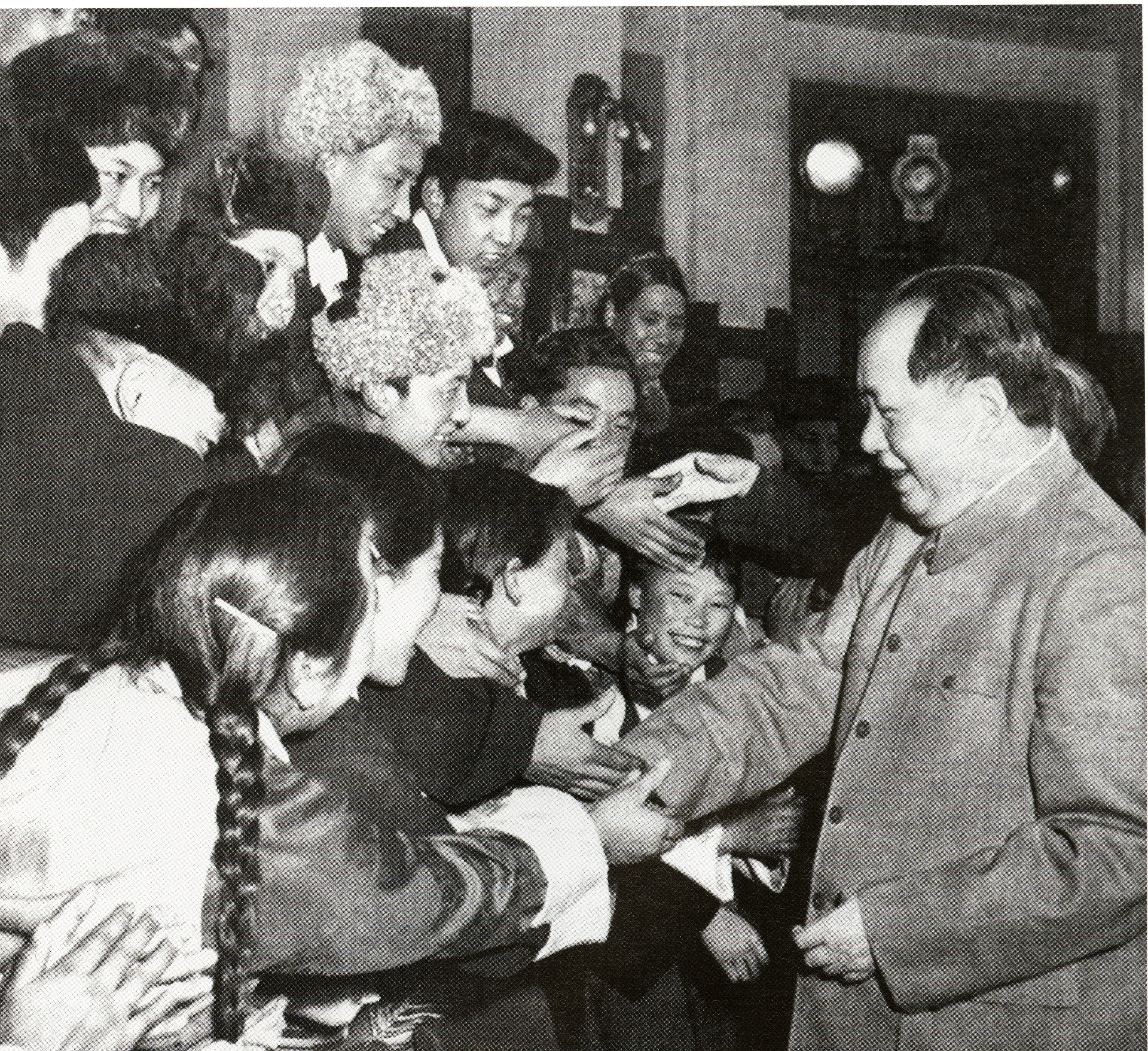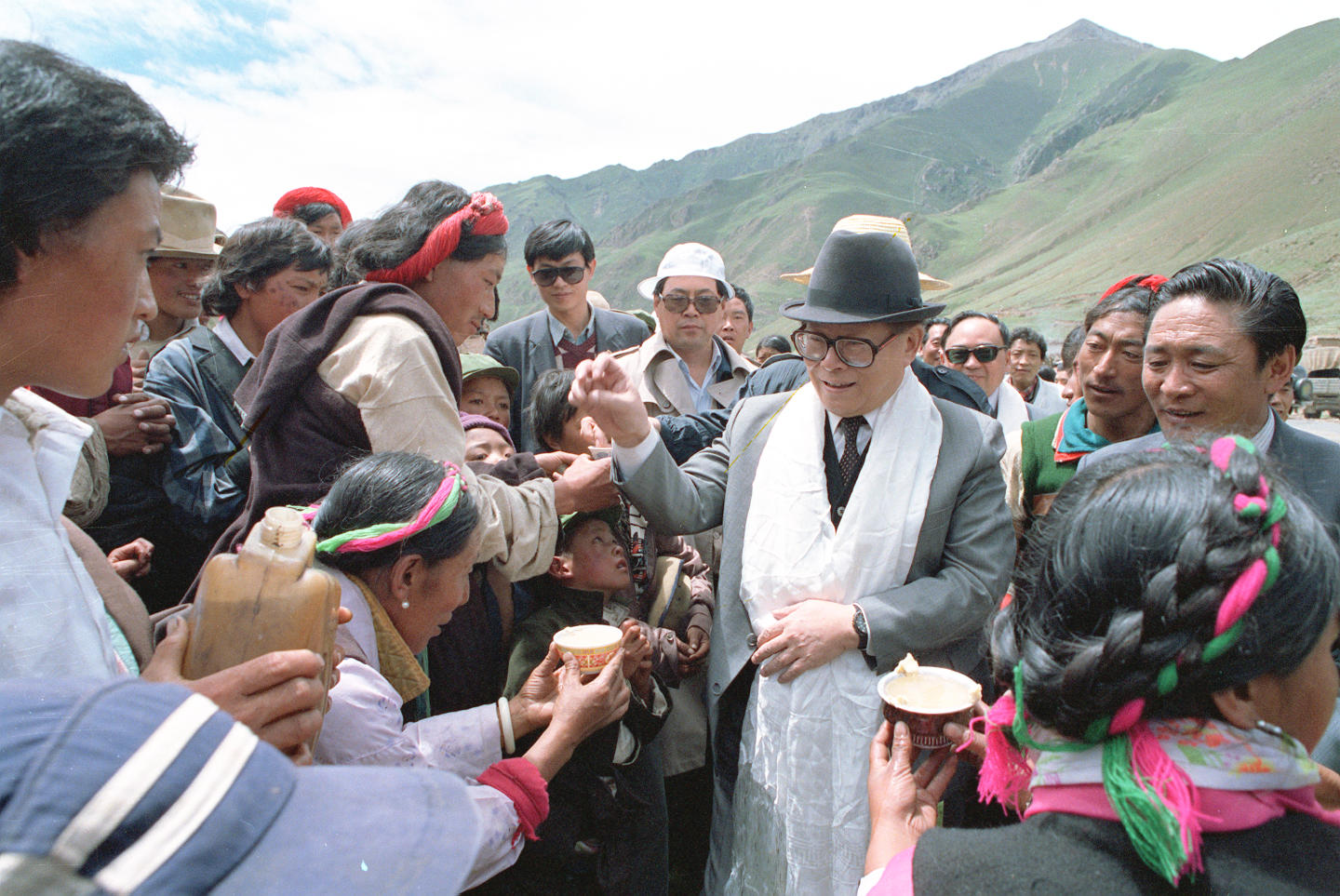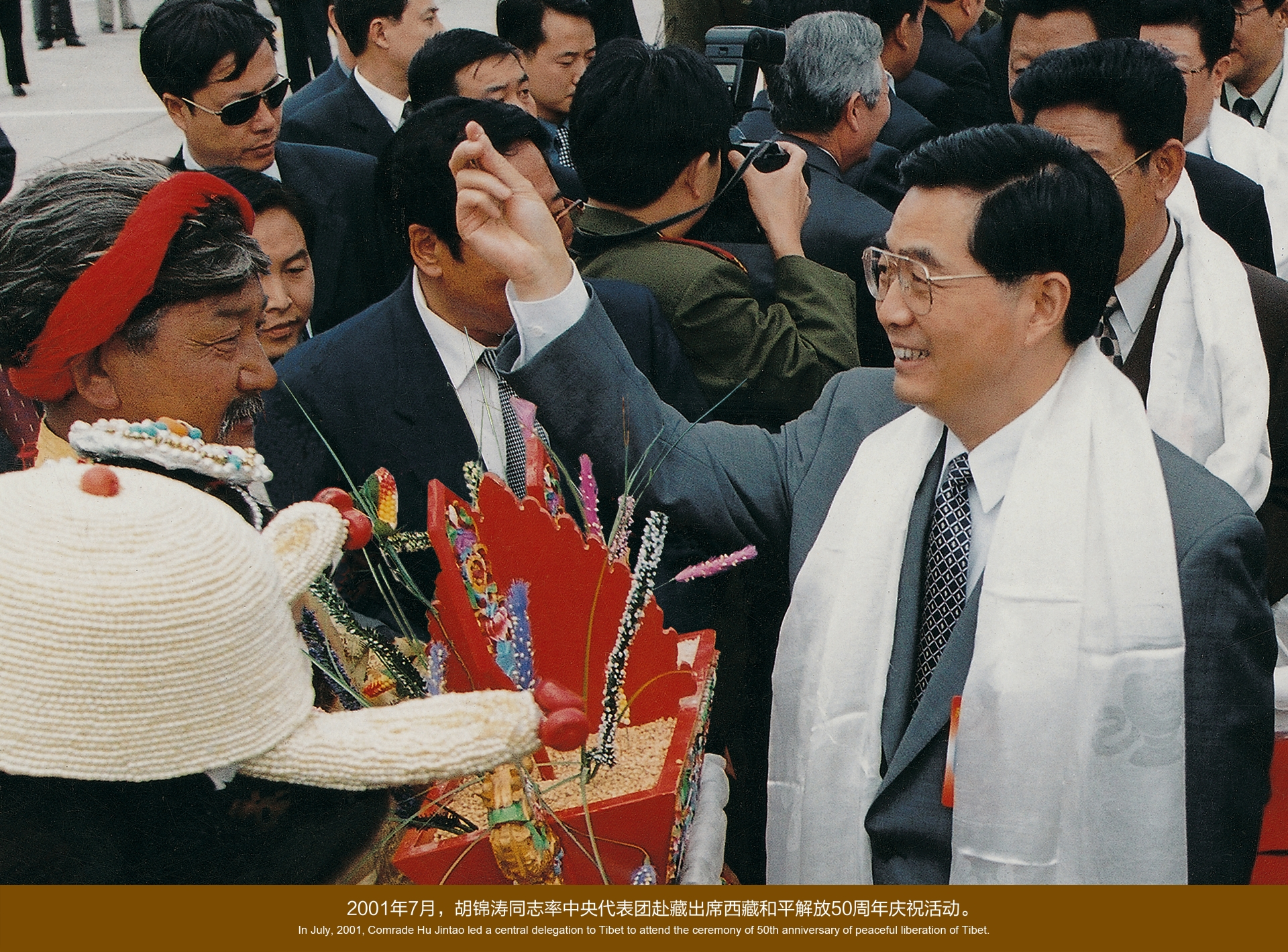
On February 8, 1957, Chairman Mao Zedong met with a delegation of Tibetan youth.
Local government of Tibet, monks and laymen all wish to establish industry and commerce in Tibet and develop its economy. It is good. Central People’s Government is certain to help you gradually develop economy and improve people’s life in Tibet.
——select from a reply of Chairman Mao to the 14th Dalai Lama on August 18th, 1952
After the peaceful liberation of Tibet in 1951, the Central Government began to invest a lot of manpower, material resources and financial resources to help Tibet improve people's livelihood and relieve disasters, develop various areas including economic, cultural, educational and medical undertakings and carry out large-scale infrastructure construction. Sichuan-Tibet Highway, Qinghai-Tibet Highway, Lhasa-Shigatse Highway, Shigatse- rGyal-tse, and rGyanl-tse-Yadong Highway were built then. By the end of 1957, the total length of highway in Tibet had reached more than 6,000 kilometers. In May 1956, the air route from Beijing to Lhasa was opened successfully. In 1954, the first group of 1,500 teachers were sent to support Tibet. In April 1974, the State Council approved Report on Instructions to Send Teachers from Inland to Support University, Middle-School and Specialized Schools in Tibet s, stipulating that faculty aid to Tibet will be implemented under the system of pair support from inland to a certain district and certain school in Tibet. Under the support of the Central Government, the machinery, electricity, building materials, light industry and ethnic handicrafts industry in Tibet were under initially development in the 1960s and 1970s.

On April 9, 1987, Deng Xiaoping gave a warm handshake to nga-phod-ngag-dbang-vjigs-me at the Great Hall of the People in Beijing.
You are unable to draw a correct conclusion on China’s ethnic policies and current situations in Tibet based on the population of Han people in Tibet. The point a is to improve people’s livelihood in Tibet, speed up its development and make Tibet come out top during the building of four modernizations in China.
——select from a talk between Comrade Deng Xiaoping and Jimmy Carter, former president of the United States
At the national border defense work conference in 1979, the Central Government determined the policy of aiding Tibet by the whole nation. In 1980, at the First Tibet Work Forum by the central government, it was demanded that all relevant districts and units in the country to "work hard to support Tibet" and the Central Government's financial subsidies to Tibet should reach 10% annual increase. In 1983, adhering to the principle of the nation’s support to Tibet, the State Council made a decision to support Tibet with key counterparts in provinces and municipalities including Sichuan, Zhejiang, Shanghai and Tianjin providing pair support in addition. In 1984, it was decided at the Second Tibet Work Forum that nine provinces and municipalities of Beijing, Tianjin, Shanghai, Shandong, Fujian, Sichuan, Zhejiang, Jiangsu, and Guangdong and the central state organs would help build 43 urgently-needed small and medium-sized projects in Tibet. It greatly promoted economic and social development of Tibet in the 1980s. Construction contractors took full-responsibility including design, construction, equipment configuration and personnel training of all projects. These turn-key projects could be put into use directly after completion.

In July, 1990, Comrade Jiang Zemin made an investigation in Tibet.
The development of Tibet and the fate of Tibetan people have close relations with the fates of China and Chinese nation historically. Members of the CPC must do a good job in Tibet work in the new era from the strategic perspective of the overall work of the Party and government.
——select from a remark of Jiang Zemin at the Fourth Tibet Work Forum
In 1994, the Third Tibet Work Forum determined the aid model of segment responsibility, counterpart support and regular rotation. 15 provinces or municipalities ( Chongqing was later added), central and state organs would support 7 prefectures or municipalities and units under the direct administration of TAR. Central and state organs, 29 provinces (municipalities, autonomous regions), and 6 separate cities would jointly assist Tibet in building 62 projects. The system of a 3-year rotation for Tibet-aid cadres were combined with capital investment and project construction. In 2001, it was determined at the Fourth Tibet Work Forum that counterpart support for Tibet would be extended for another 10 years. Moreover, three new provinces (municipalities) and 17 central enterprises were included to undertake the counterpart support tasks. Counterpart support would fully cover 74 counties (municipalities or districts) in Tibet. There were all together 70 construction projects supported by other provinces (municipalities) and Central and state organs. A counterpart aiding mechanism of economy-support, cadre-support, talent-support, and technique-support effectively combined to support Tibet were formed as a result.

In July, 2001, Comrade Hu Jintao led a central delegation to Tibet to attend the ceremony of 50th anniversary of peaceful liberation of Tibet.
All members of the CPC must look from the strategic perspective of the overall work of the Party and government, further understand the importance and necessity to do a good job in Tibet work, carefully implement the policies and guidelines on Tibet work by the central government, and continuously open a new era for Tibet work.
——select from a remark of President Hu Jintao at the Fifth Tibet Work Forum
By the end of 2004, all 70 construction support projects had been completed. In 2005, it was demanded by the CPC Central Committee and State Council's Opinions on Further Improving Tibet's Development and Stabilization Work that China would continue to adhere to the segment responsibility, counterpart support and regular rotation approach, focusing on cadres support for Tibet and we shall integrate cadre support to Tibet with economic support, talent support and technical support. In 2010, it was requested that the central government shall continue to maintain the continuity and stability of Tibet's special preferential policies, further increase policy support and capital investment, effectively safeguard and improve people's livelihood as the starting point and ultimate goal for Tibet's economic and social development, counterpart support for Tibet will be extended into 2020 and 17 counterpart support provinces (municipalities) should make sure that its "the annual support for Tibet in terms of capital investment, physical products and workload, under the current system, shall account for one thousandth of last year’s local fiscal general budget revenue of the province (municipality)."

On July 17, 2011, Comrade Xi Jinping, leading a central delegation, arrived in Lhasa to attend the ceremony for the 60th anniversary of the peaceful liberation of Tibet.
We must adhere to the strategic thought of governing China must govern its frontier and governing China’s frontier must first stabilize Tibet and the important principle of governing Tibet based on law, enriching Tibetan people, constructing Tibet on a long term and consolidating its foundation.
——select from a remark of President Xi Jinping at the Sixth Tibet Work Forum
In 2014, it was emphasized at the TV and teleconference on the 20th anniversary of Counterpart Support for Tibet that counterpart aid was an important strategic decision made by the CPC Central Committee based on the overall situation of the Party and the state. In 2015, the CPC Central Committee held the Sixth Tibet Work Forum. President Xi Jinping delivered an important speech, stressing that we shall adhere to the Party’s strategy of governing Tibet by focusing on safeguarding national reunification and strengthening national unity.We must ensure national security and long-term stability, ensure sustained and healthy development of our economy and society, ensure continuous improvement of material, cultural and living standards of all ethnic groups and ensure a good ecological environment in Tibet by unswervingly carrying out the anti-separatist struggles, unswervingly promoting economic and social development, unswervingly securing and improving people's livelihood and unswervingly promoting exchanges,communication and blending among all the ethnic groups in Tibet. We must do a good job in counterpart support for Tibet by optimizing the talent structure of cadres and sending outstanding talents to areas with difficult conditions and complex situations to cultivate their will and improve their ability.
Since 2016, the central government had made a total investment of 313.6 million yuan to Tibet, surpassing 17.3% of planned investment amount and counterpart-support ministries, provinces, cities and enterprises had signed 247 aiding projects and invested nearly 35 million yuan in total. Package-aiding to Tibet including economic support, intellectual support, technical support, enterprise support, employment support, medical support, educational support and talent support have greatly promoted social and economical development of Tibet. In 2020, 47 tunnels of Lhasa-Nyingchi Railroad, the first electrified railway in Tibet were put into operation. Qinghai-Tibet and Sichuan-Tibet Power network project built a sky road of electric power and illuminated the highland. The average life span of Tibetan people increased from 68.2 years old according to demographic census in 2010 to 71.1 years old in 2020. Tibet is the only provincial-level contiguous poor areas as a whole. Targeted poverty alleviation was achieved in the end of 2019. The ecological system of Tibet enjoys general stability and Tibet is still an area with top eco-environmental quality in the world.
2020 Copyright by Museum of Tibetan Culture, China Tibetology Research Center All Rights Reserved.
Unless otherwise indicated, all of the content featured or displayed on the Site, including, but not limited to, text, pictures, videos and the 360° panoramic videos, is owned by Museum of Tibetan Culture.


Log InPlease log in and comment later